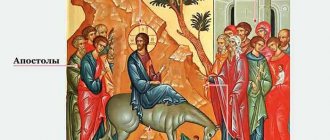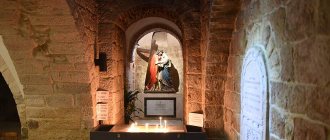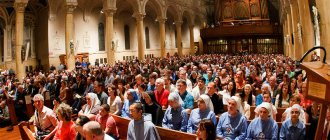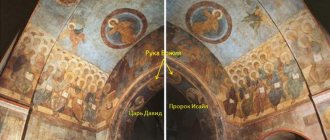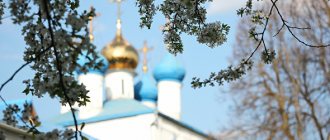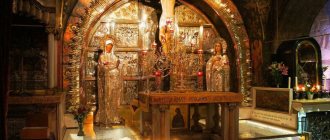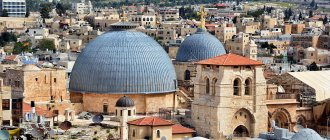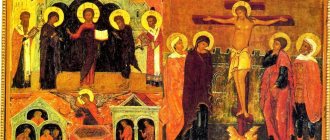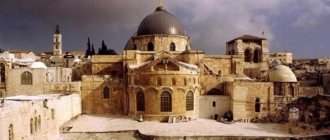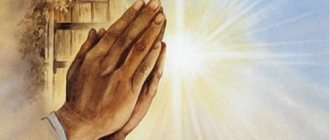In Christian iconography, the image of “The Entry of the Lord into Jerusalem” is given a special place. This impressive religious painting is dedicated to the period of the Savior's stay in our world. The icon depicts a great gospel event that marked the beginning of a new era on earth.
The festival of the shrine belongs to the twelfth and has a moving date. It is held on the eve of Holy Week, on the last Sunday before Easter. According to a long tradition, Orthodox Christians call it Palm Sunday.
History of the icon
The subject depicted in the painting inspired many icon painters. At all times of the existence of the Christian religion, masters sought to convey it as accurately as possible, with all the essential details.
Images of the triumphal entry of Jesus into Jerusalem were found in early Christian art. They were present in book miniatures, sacred texts, and on sarcophagi. This famous gospel scene is part of a diptych created at the end of the 10th century and located in the State Hermitage. The entry of the Savior into Jerusalem is depicted in detail in the mosaic of the Palatine Chapel in the Italian city of Palermo, dating from the mid-12th century. This episode can also be seen on the frescoes of the Church of St. Nicholas Orphanos in Thessaloniki (XIV century).
At different periods, talented artists became the authors of the icon depicting the legendary entry of the Lord into Jerusalem. Among Russian masters, the most famous is Andrei Rublev, who created such a canvas at the beginning of the 15th century.
Today, the image, considered authentic, is kept in the Stavronikita Monastery on Holy Mount Athos. The authorship of this painting belongs to the icon painter Theophanes of Crete.
LiveInternetLiveInternet
The Entry of the Lord into Jerusalem: a Gospel story in painting.
On the Sunday before the start of Holy Week, Christians celebrate one of the most important biblical events - the Entry of the Lord into Jerusalem .
The Sunday preceding Easter is called Palm Sunday. On this day, the Church remembers the most important Gospel event - the coming of the Savior to Jerusalem less than a week before the upcoming crucifixion.
The day before, He raised Lazarus in a village on the other side of the Mount of Olives from Jerusalem. Rumors about the miracle quickly spread throughout the area, and people in the city started talking about the fact that this was a sign that ancient prophecies had been fulfilled, and the Messiah, the savior of the Israeli people, was already here.
Icon.
End of the 17th century, Pskov. Private collection. Jesus did not refute these rumors, but, on the contrary, mounted a donkey and entered the city through the Golden Gate, which ordinary people were not allowed to enter even on foot, because from the very beginning they were intended for one single Guest. Such a step was tantamount to declaring oneself the Messiah. The residents of the city took it this way and laid palm branches under Jesus’ feet (in memory of this event in Russia, it is customary to come to churches on this day with willow branches).
But, entering the famous Temple of Jerusalem - the center of the Old Testament religion, Jesus, contrary to popular expectations, did not at all proclaim a holy war against the Romans and did not lead the crowd to storm the nearby fortress of the Roman garrison. He expelled the merchants from the Temple, accused those gathered of violating the faith, and left the city.
Entry of the Lord into Jerusalem.
1698. Foma Potapov and Vasily Samsonov Potapov. Ostashkov. Wood, tempera. 183 × 153. KP 4459. From the Assumption Cathedral of the Joseph-Volokolamsk Monastery. Central Museum of Ancient Russian Culture and Art named after Andrei Rublev ( The iconography of the holiday with Christ seated in the center on a white donkey, turning to the apostles following him, is typical of the second half of the 17th century. The landscape background is interpreted in a naturalistic spirit, conveying the depth of space due to a noticeable reduction in proportions figures in the background. An interesting detail is a ladder attached to a palm tree, along which the youths climb the tree to greet Christ. The image of Jerusalem is distinguished by its attention to the detailed rendering of the architecture of city buildings and goes back to the engravings of printed Proskinitariums - guides to the Holy Land.)
Icon "Entrance into Jerusalem".
The main iconostasis of the Archangel Cathedral of the Moscow Kremlin. School of royal isographers. Russia, Moscow, 1680 (1681) Moscow Kremlin Museums Jesus will no longer appear in the Temple. For several days he teaches near Jerusalem, regularly arguing with the Pharisees - the recognized religious leaders of Judea. And at the same time, the people’s disappointment in Him is growing. Those who laid palm trees under the feet of the Savior are less and less pleased with Him.
These days Jesus predicts a bitter fate for Jerusalem. The prophecy will be fulfilled in a few decades: in 72 AD. e. the city and the Temple will be razed to the ground by the Romans, and the Jews will be expelled from their native land.
Images of the Savior riding on a donkey are already known in early Christian art. N.V. Pokrovsky points out early examples of the iconography of the Entry of the Lord into Jerusalem - on sarcophagi and in book miniatures, such as in the Syrian Gospel of Rabula (586) and the 6th century Gospel from the Cathedral Museum in Rossano.
Almost all images of the Entry of the Lord into Jerusalem have a common compositional scheme, but they differ significantly in details, sometimes providing greater illustrativeness, sometimes focusing the viewer’s attention in a special way. The topic of iconography is so vast that I will not touch on it here; I’ll pay more attention to the paintings different eras.
Over the centuries, the iconography of this subject has changed little, and even in post-Renaissance art the iconographic scheme in most works remained the same.
The ancient Jews had a custom: the ruler did not enter the city on foot, but rode there on horseback. If the king sat on a horse, this meant a desire for war, and guests arrived on a donkey only with good wishes. The inhabitants of Jerusalem, as a rule, greeted the ruler with palm branches. These traditions are reflected in Schwartz's painting: his patriarch rides a donkey in a white blanket, and the participants in the procession carry palm branches.
Mikhail Nesterov, as an Orthodox artist, could not help but turn to the biblical story: his Jews greet the Savior by spreading their clothes under the feet of His donkey and “strewing” the path with green branches.
Mikhail Nesterov.
"The Entry of the Lord into Jerusalem." You are coming in the midst of the deceived mob, Bowing your sorrowful gaze, You are entering on a meek donkey Into the fatal gates - to shame... Ivan Bunin The kingdom of love and reconciliation, which God reveals and offers to everyone, could not be accepted even by the chosen disciples who followed Him. In the last days before the crucifixion, even they thought about earthly things: the Apostle Peter suggested not going to Jerusalem, where they were destined to suffer, Salome asked for advantageous places at the royal throne for her sons, Judas, seeing that the Lord did not care about money, slowly took it and spent it to your earthly attachments. What can we say about the residents of the capital city?
Here everyone was believers, everyone knew the Ten Commandments, everyone made sacrifices to God, observed fasts, gave tithes and prayed not out of compulsion, but out of faith in the significance of everything that was happening. The progressive Pharisees sincerely saw themselves as better than many ordinary people; the scribes believed that knowledge about God was enough to teach others how to live. Teachers began to “love presiding at meetings, reclining at feasts.” They turned into “blind leaders of the blind” because they believed that God was the same as they imagined for themselves: “He may be alive, but everything is clear to us: God is not where the publican, the harlot, the leper are, not there, where is the poor and the sick. This means there is no need to look for Him there anymore...”
Therefore, the seemingly touching entry of the Lord into Jerusalem opens the last terrible page of the now undisguised war of absolute Love with the spirit of this world, which, like a deadly virus, imperceptibly infects our understanding of the world and leads us to spiritual muteness.
This war is declared by Jesus Himself: I did not come to bring peace, but a sword (Matthew 10:34 ). The main days in the destinies of the whole world are approaching, when the blood of the Righteous will be shed innocently. Our Lord Jesus Christ will be crucified on the cross, sacrificing himself for the “life of the world.”
All captions are given under the illustrations
Giotto di Bondone (1266-1337). Entry of the Lord into Jerusalem (1304-1306).
Pietro Lorenzetti (c. 1280-1348). Entry of the Lord into Jerusalem (1320)
.
Pedro Orrente (c. 1580-1645). Entry of Christ into Jerusalem (1640).
Jean Hippolyte Flandrin (1809-1864). Entry of the Lord into Jerusalem (1842).
Wilhelm Kotarbinsky (1849-1922), Pavel Svedomsky (1849-1904). Entry of Christ into Jerusalem (1890s). (Vladimir Cathedral, Kyiv)
Nikolai Koshelev (1840-1918). Entry of Christ into Jerusalem (1890–1910s).
Semiradsky Henryk (1843-1902). Entry of Christ into Jerusalem (1876).
Claudius Lebedev (1852-1916). Entry of the Lord into Jerusalem.
Jean-Leon Jerome The Entry of the Lord into Jerusalem
Poem by Ivan Bunin “Entrance to Jerusalem” (1922)
Russian classic, travels through the Middle East, visited Jerusalem. He conveyed his impressions in poetry:
"Hosanna! Hosanna! Come in the name of the Lord!” And with a furious wheeze in his chest, With the fire of hell in his sparkling purulent eyes, Swelling all the veins in his neck, Screaming ever more menacingly, The cripple throws himself into the dust On his knees, Having made his way through the noisy people, His mouth gaping, gap-toothed and covered in foam, And his arms outstretched in prayer - About vengeance, about vengeance, About a bloody feast for all those bypassed by fate - And You, All-Good, Quiet evening Light, You come in the midst of the deceived mob, Bowing your sorrowful gaze, You enter on a meek donkey Into the fatal gates - to shame, to the waste!
Stained glass window in the Notre-Dame-de-Lanes cathedral, circa 1215. with the entrance to Jerusalem.
Mosaics from the Palatine Chapel in Palermo. Entry into Jerusalem. Mid-12th century
Benjamin Robert Haydon THE ENTRY OF CHRIST INTO JERUSALEM 1814-1820.
Entry of the Lord into Jerusalem. China, 683–770
modern painting
Wall painting
Decani Monastery, Serbia, ca. 1350
Mosaic of the Cathedral of San Marco in Venice, con. 12-13th century
Ivory carving, 10th century.
Theophanes of Crete (c. 1500-1559). Fresco in the center St. Nicholas in Meteora
Icon from the Vatopedi monastery (Athos)
Sinai icon 14th century.
Byzantine icon, c. 1400
Syrian miniature, ca. 1220
Soria, Spain, ca. 1125
Nikolai Verdunsky, enamel, ca. 1181
Brothers Limburg. Miniature of the Luxurious Book of Hours of the Duke of Berry, c. 1411-1416
Master of the Tuison Altarpiece, France, 15th century.
Unknown artist, ca. 1497-1500
Melozzo da Forlì, ca. 1477-1482
Pieter Cook van Aelst, c. 1530
Peter Paul Rubens, 1632
Wenzel Hollar (1607-1677)
Mironov Andrey Nikolaevich The Entry of the Lord into Jerusalem. 2016 Oil on canvas 90 x 170 cm.
https://obiskusstve.com/2199987573436450924/vhod-g...angelskij-syuzhet-v-zhivopisi/
«««««««««««««««««««««««««««««««««««««`
Description of the relic
The icon “The Entry of the Lord into Jerusalem” conveys the events that took place after the resurrection of Lazarus, a few days before the Jewish Passover. During this period, Christ entered Jerusalem, which was soon followed by tragic events.
The religious painting depicts:
- Jesus sitting astride a white donkey. His figure occupies the central part of the canvas. The Savior sits sideways and slightly tilts his head. His right hand blesses the children, who cover the path before Him with robes as a sign of great respect. Despite the fact that Jesus is the King of Kings, his appearance expresses modesty and meekness. The lack of pride is also evidenced by the manner in which the Messiah chose to enter Jerusalem. Instead of appearing on a beautiful horse, He chose an ordinary donkey.
- Apostles following God's Son. They are located on the left side of the picture. The disciples of Christ are talking to each other about something. There is a noticeable restless expression on their faces, in which one can read excitement for the fate of their Teacher. In some cases, two apostles are drawn, sometimes there are more of them.
- Residents of Jerusalem, dressed in festive clothes. The Jews joyfully greet Jesus with palm branches because they see him as their future liberator.
The picture also shows a mountain in the background. This is the Olivet, from which all of Jerusalem is visible. A lonely palm tree is often depicted on a hill, which also looks very symbolic. Sometimes there is another detail on the canvas - a cave, symbolizing the future Holy Sepulcher.
Paintings, frescoes and icons of the Entry of the Lord into Jerusalem
Beginning with Vespers of the week of Vai, all the songs of the Lenten Triodion lead us in the footsteps of the Lord coming to his free death.
The solemn entry of the Lord into Jerusalem is celebrated by the Orthodox Church on the last Sunday before the bright holiday of Easter.
This is one of the great holidays and it is also called Palm Sunday, because on this day, during the all-night service of God (or at Matins), blessed branches of willow or other plants are distributed to the praying people.
Entry of the Lord into Jerusalem
People are cleaning before the holiday. Away from this crowd I wash Your most pure feet with myrrh from a bucket.
For whom in the world is there so much breadth, so much torment and such power? Are there so many souls and lives in the world? So many settlements, rivers and groves? But such three days will pass and they will push me into such emptiness, that during this terrible period I will grow up to Sunday.
Pasternak B.L.
Entry of the Lord into Jerusalem. Giotto. 1304-06
In the old days, kings were greeted with green branches when they returned in triumph after defeating their enemies. And we, holding in our hands the first branches that bloom in spring, glorify the Savior as the Conqueror of death; because He raised the dead and on this very day entered Jerusalem in order to die for our sins and rise again and thereby save us from eternal death and eternal torment. The branch serves as a sign of Christ's victory over death and should remind us of the future resurrection of all of us from the dead.
Entry of the Lord into Jerusalem
All four evangelists tell about the Entry of Jesus Christ into Jerusalem a few days before His Passion on the Cross. When, after the miraculous resurrection of Lazarus, Jesus Christ, six days before Easter, gathered to go to Jerusalem to celebrate it, many of the people followed Jesus with a joyful feeling, ready to accompany Him with the solemnity with which kings were accompanied in ancient times in the East. The Jewish high priests, indignant at Jesus because He aroused extraordinary veneration among the people, planned to kill Him, as well as Lazarus, “because for his sake many of the Jews came and believed in Jesus.”
Pedro Orrente. Entry of Christ into Jerusalem. 1640
But something unexpected happened to them: “The multitude of people who came to the festival, hearing that Jesus was coming to Jerusalem, took palm branches, came out to meet Him and exclaimed: “Hosanna! Blessed is he who comes in the Name of the Lord, the King of Israel!” Many spread their clothes, cut branches from palm trees and threw them along the road, the children welcomed the Messiah. Having believed in the powerful and good Teacher, the simple-hearted people were ready to recognize Him as the King who had come to free them.
icon
Further, the evangelists narrate: “Jesus, having found a young donkey, sat on it, as it is written: “Do not be afraid, daughter of Zion! Behold, your King is coming, sitting on a colt.” And Jesus entered the temple of God, and drove out all those selling and buying in the temple, and overturned the tables of the money changers and the seats of those selling doves.
And he said to them, “It is written, ‘My house will be called a house of prayer,’ but you have made it a den of thieves.” All the people listened to the teaching of the Lord with admiration. After which the blind and lame came to Jesus, whom He healed. Then, leaving Jerusalem, He returned to Bethany.
icon
All evangelists emphasize the royal dignity of Jesus, the Son of David, in the event of the Entry of the Lord into Jerusalem. The Church recalls and sings this solemn Entry into Jerusalem on the last Sunday of Great Lent. (Kontakion, tone 6): “On the throne in heaven, carried on the earth by lots, O Christ God, you received the praise of angels and the children’s singing, calling to You: blessed are you, who is come to call Adam.”
During Matins, green branches with candles are distributed to those present in memory of the fact that they met the Lord with palm branches in their hands. Show off and rejoice in the Church of God: behold, your King has come in righteousness, riding on a lot, praised by children: Hosanna in the highest!
Temple fresco
Today is a solemn and bright day, temporarily overcoming the concentrated and mournful mood of Great Lent and anticipating the joy of Holy Easter. In the feast of the Entry of the Lord into Jerusalem, the glory of Christ shines brightly as Almighty God, and as the King, the son of David, the Lord, welcomed by the chosen people of God.
On this day, the Church remembers that the Jews who came to the Easter holiday greeted Jesus as the Messiah, as a prophet, as a great wonderworker, for they knew that He had recently raised four-day-old Lazarus. Adults and children sang and rejoiced, placed their clothes under the feet of the donkey on which He rode, and greeted Him with green branches and flowers.
From the custom of using fronds (branches of the date palm) on this holiday, it is called the Week of “Waiy”, “Flower-bearing”, “Colorful”.
In our country, this holiday is called “Palm Sunday”, because the fronds are replaced by willow, since it shows signs of life awakening after a long winter earlier than other trees.
Standing with these branches and lit candles is a memory of the solemn Entry of the King of Glory into free suffering. Those who pray seem to meet the invisibly coming Lord and greet Him as the conqueror of hell and death.
icon
On Sunday evening, liturgical texts indicate the onset of Passionate, or Great, Week. Beginning with Vespers of the week of Vai, all the songs of the Lenten Triodion lead us in the footsteps of the Lord coming to his free death.
The entry of Jesus Christ into Jerusalem to surrender Himself to reproach, to humiliation, to a painful and shameful death on the cross for the sake of saving sinful people has the deepest moral and symbolic significance. The prototype of this great event is considered to be David's entry into Jerusalem after his victory over Goliath. David was joyfully and gratefully met and greeted by all the people. And King Saul became jealous and harbored a grudge against David. David, after some time, became the great king of Judah and Israel.
wall painting
The iconography of the “Entry into Jerusalem” is almost unchanged. Jesus Christ rides into Jerusalem on a young donkey. He turned to His disciples who were following the donkey. In Christ’s left hand there is a scroll symbolizing the sacred text of the covenant; in his right hand He blesses those who meet him.
Men and women came out of the city gates to meet Him. Behind them is Jerusalem. This is a large and grand city, tall buildings are depicted closely. Their architecture indicates that the icon painter lived surrounded by Russian churches.
The Entry of the Lord into Jerusalem.. Vasily Nesterenko
Children place their clothes under the hooves of the donkey. Others are palm branches. Sometimes two more children's figures are written at the bottom of the icon. One child sits with his leg tucked and slightly raised, over which another child is leaning, helping to remove a splinter from his foot.
This touching everyday scene, which came from Byzantium, gives the image vitality, but, nevertheless, does not in any way reduce the pathos of what is happening.
Children's clothes are most often white, which symbolizes their spiritual purity and gentleness.
Entry of the Lord into Jerusalem. Russian icon, late 17th century
As usual for Russian icons, the clothes of all adult characters are depicted with skill and strict grace. Behind the figure of Christ, a mountain rises into the sky, depicted using traditional symbolic means.
On Palm Sunday, fish, oil and wine are allowed at meals.
Entry of the Lord into Jerusalem. Hippolyte Flandrin. 1842
I did not come to bring peace, but a sword (Matthew 10:34). The main days in the destinies of the whole world are approaching, when the blood of the Righteous will be shed innocently. Our Lord Jesus Christ will be crucified on the cross, sacrificing himself for the “life of the world.”
The Sunday preceding Easter is called Palm Sunday. On this day, the Church remembers the most important Gospel event - the coming of the Savior to Jerusalem less than a week before the upcoming crucifixion.
The day before, He raised Lazarus in a village on the other side of the Mount of Olives from Jerusalem. Rumors about the miracle quickly spread throughout the area, and people in the city started talking about the fact that this was a sign that ancient prophecies had been fulfilled, and the Messiah, the savior of the Israeli people, was already here.
Entry of the Lord into Jerusalem. Coptic icon
Jesus did not refute these rumors, but, on the contrary, mounted a donkey and entered the city through the Golden Gate, which ordinary people were not allowed to enter even on foot, because from the very beginning they were intended for one single Guest. Such a step was tantamount to declaring oneself the Messiah. The residents of the city took it this way and laid palm branches under Jesus’ feet (in memory of this event in Russia, it is customary to come to churches on this day with willow branches).
Entry of the Lord into Jerusalem. Mosaic, 12th century
But, entering the famous Temple of Jerusalem - the center of the Old Testament religion, Jesus, contrary to popular expectations, did not at all proclaim a holy war against the Romans and did not lead the crowd to storm the nearby fortress of the Roman garrison. He expelled the merchants from the Temple, accused those gathered of violating the faith, and left the city.
Entry of the Lord into Jerusalem. Frescoes of the complex of San Francesco, Assisi
Jesus will no longer appear in the Temple. For several days he teaches near Jerusalem, regularly arguing with the Pharisees - the recognized religious leaders of Judea. And at the same time, the people’s disappointment in Him is growing. Those who laid palm trees under the feet of the Savior are less and less pleased with Him.
These days Jesus predicts a bitter fate for Jerusalem. The prophecy will be fulfilled in a few decades: in 72 AD. e. the city and the Temple will be razed to the ground by the Romans, and the Jews will be expelled from their native land.
You are coming in the midst of the deceived mob, bowing your sorrowful gaze, you are entering on a meek donkey into the fatal gates - to shame...
Ivan Bunin
Entry of the Lord into Jerusalem. Tver icon
The kingdom of love and reconciliation that God reveals and offers to everyone could not be accepted even by the disciples who were chosen and followed Him.
In the last days before the crucifixion, even they thought about earthly things: the Apostle Peter suggested not going to Jerusalem, where they were destined to suffer, Salome asked for advantageous places at the royal throne for her sons, Judas, seeing that the Lord did not care about money, slowly took it and spent it to your earthly attachments. What can we say about the residents of the capital city?
Here everyone was believers, everyone knew the Ten Commandments, everyone made sacrifices to God, observed fasts, gave tithes and prayed not out of compulsion, but out of faith in the significance of everything that was happening. The progressive Pharisees sincerely saw themselves as better than many ordinary people; the scribes believed that knowledge about God was enough to teach others how to live.
Benjamin Robert Haydon. Entry of Christ into Jerusalem
Teachers began to “love presiding at meetings, reclining at feasts.” They turned into “blind leaders of the blind” because they believed that God was the same as they imagined for themselves: “He may be alive, but everything is clear to us: God is not where the publican, the harlot, the leper are, not there, where is the poor and the sick. This means there is no need to look for Him there anymore...”
Therefore, the seemingly touching entry of the Lord into Jerusalem opens the last terrible page of the now undisguised war of absolute Love with the spirit of this world, which, like a deadly virus, imperceptibly infects our understanding of the world and leads us to spiritual muteness.
Illustration for a children's Bible
This war is declared by Jesus Himself: I did not come to bring peace, but a sword (Matthew 10:34). The main days in the destinies of the whole world are approaching, when the blood of the Righteous will be shed innocently.
Our Lord Jesus Christ will be crucified on the cross, sacrificing himself for the “life of the world.” https://foma.ru/ierusalim-gorod-slavyi-hrista.html
When untruth accuses, We remember God's judgment: Lightning flashes in vain, Thunder does not kill people... But no, it turns out, it was not in vain. We know the passionate one in advance. And the King of kings bears his lot to a slavish and terrible death. There the healed ones stand, thundering with hosannas with the children.
O people! By any account, We have no right to live! We are not talking about those who are in sewage, What can we say about the dead! How could it happen that no one protected Life? The world is suicidal because it has not canceled its choice. He turned his eyes away from the Truth and drowned in entertainment.
Leaves and clothes cover the Road to Jerusalem! They make noise, run, proclaim... Day of rejoicing! And behind him - the Democratic Court of Pilate, the Bishop's rumor, the human rights soldiers, and the thorn-bearing Head! After all, they know that He will be crucified, And they will beat Him to death!
Why are the legs and arms nailed? Pilates, elders here and there. Another Rome's idiots guard the new order. And we, who follow the Light? Are we not pitying His Head? I’ve been tired of being in this world for a long time, but I’m punished, I’m still living! Apparently, there was no place for my uncleanliness anywhere.
Hieromonk Roman (Matyushin) April 20, 2008, Vetrovo monastery. Entry of the Lord into Jerusalem.
book illustration
The Entry of the Lord into Jerusalem (1617), Sir Anthony Van Dyck
Giotto di Bondone.
Everything was taken from free sources on the Internet
Meaning in Christianity
By entering Jerusalem, the Son of God showed that He is the true Savior and is ready to meekly accept the fate destined for Him by the Heavenly Father. As the Gospel tells us, a week later the Messiah was crucified on the cross. That is why the entry into Jerusalem is considered one of the last bright moments of Jesus’ earthly life and is depicted as a festive event.
Prophecies about the coming of Christ to Jerusalem are ubiquitous in the Old Testament. The prophet Zechariah foresaw it especially accurately, who called the Son of God “the meek one sitting on a donkey” (Zechariah 9:9).
The inhabitants of Jerusalem knew about the upcoming arrival of Jesus Christ and anxiously prepared for it. However, what they expected from the Son of God was not what He brought. The Jews hoped that Jesus would free them from the hated power.
The people of Jerusalem betrayed the Savior and desired His death, because they wanted not to receive spiritual instructions, but independence from their oppressors. Christ did not strive for dominance and victories over other earthly rulers. He fulfilled a different purpose - he spread the truth of God, preached about the coming of the Heavenly Kingdom, about the need to cleanse the soul. The Son of the Lord wanted to save people from eternal death and hellish torment, and was preparing to sacrifice his life to atone for the sins of all mankind.
The great feast of the Entry of the Lord into Jerusalem is filled with both sorrow for the upcoming torment of the Savior on the cross, remembered in the following week, called Passion, and the pre-Easter joy of the Resurrection. The source of the iconography of the Lord's Entry into Jerusalem is the Gospel, which tells how Christ, sitting on a young donkey, accompanied by disciples on the eve of the Jewish Passover, enters the city in which He will be handed over to be crucified. A crowd of people greets the Savior at the gates of Jerusalem, shouting praise and covering the road with palm branches cut from trees and exclaiming: Hosanna to the Son of David. Blessed is he who comes (he who comes) in the name of the Lord, the King of Israel. Hosanna in the highest. This greeting meant: Hosanna (i.e. save, help, grant happiness) Lord, Son of David; He is the king of Israel. His entry is blessed for the whole world because it is in the name of the Lord. Hosanna in the highest, i.e. help, Almighty.ILL.1 The general delight reached its highest degree as the procession approached the descent from the Mount of Olives. To the joyful cries of the people, the disciples of the Lord added their loud exclamations: “Blessed is the king who comes in the name of the Lord! Peace in heaven and glory in the highest." In the procession of the Lord riding on a donkey, the Old Testament prophecy about the King of Israel was fulfilled: “Rejoice with joy, daughter of Zion, rejoice, daughter of Jerusalem: behold, your King is coming to you, righteous and saving, meek, sitting on a donkey and on the colt of a donkey who has been yoked.” (Zech. 9:9). Already in the most ancient images of this gospel event its main features are reflected: a procession on a donkey and popular rejoicing. The earliest examples of the iconography of the Entrance to Jerusalem can be found on sarcophagi and in book miniatures, such as, for example, on details of a diptych from the Milan Cathedral of the 5th century. ILL.2, relief of the chair of Archbishop Maximin in Ravenna (VI century) ILL.3
On the relief of the see of Bishop Maximinus in Ravenna, the composition of the Entry into Jerusalem is combined with the “Conversion of Zacchaeus”. Since the first event took place in Jerusalem, and the second in Jericho, the artist places children with palm branches above Christ on the left, and Zacchaeus stands on a fig tree on the right, in full accordance with the description - short and with a beard. There can be no doubt that it is Zacchaeus who is represented. Not a single composition of “The Entry of the Lord into Jerusalem” has ever depicted bearded characters on a tree. In addition, Zacchaeus is dressed in the clothes of an adult - a cloak and tunic, and his pose with outstretched arms conveys delight at the words of Christ addressed to him. However, the most interesting detail should be considered the large cross-staff that Christ, sitting on a donkey, holds on his left shoulder, blessing the people with his right. Usually the image of a cross indicates the future fate of the Savior and is not connected with the events of His earthly life before the Crucifixion. In this relief, all the characters are historical figures, but at the same time they carry a certain symbolic meaning. Therefore, the cross-staff is both a symbolic detail and a sign that unites the entire composition with the idea of redemptive Sacrifice and general Resurrection. Another unusual figure for this composition is a woman covering the path of Christ with a cloth. Children are usually depicted spreading their clothes on the road. It can be assumed that in this context it personifies the image of the Church or Jerusalem. Details and characters The iconography is full of images of celebration and celebration, which corresponds to the event itself, which in many ways precedes the Holy Easter of Christ. Such moments include the image of an elegant Jerusalem - white or red buildings, bright clothes on those who greet Christ. . The main meaning of architectural scenes is the same as that of a mountain “landscape”: to actively participate in the creation of a holistic, dynamic image. Architectural scenes and mountain “landscape” are some of those visual spaces of Byzantine art where the medieval artist gave full rein to his imagination. An indispensable attribute of the landscape is the image of Mount Olivet with a lonely growing palm tree. Typically, a mountain landscape in an icon serves as a background to highlight the central image. In the XIV–XV centuries. increased attention to the development of slides - they become concave, fractional, with split tops, ledges, crevices, etc. These pictorial elements in Rus' even acquired a special iconographic name - flies (from the ancient Russian word “flake”, or “breed”: stone chipped into layers, rock chips, hewn stone tiles). These are a kind of stylized steps, thanks to which the mountain takes on the meaning of a ladder and is a symbol of spiritual ascent to God. The central image on the icon is the figure of the Lord, who enters the city on a donkey. The Savior sits sideways, turning his head slightly towards the apostles following Him (in other versions, towards Jerusalem). The Savior holds a scroll in his hand - the New Testament, and with his right hand he blesses the people who meet Him. The icon seems to contrast the left part of the composition - the smooth bend of the tree, the silhouettes of the mountains, the figures of the apostles and Jesus Christ - with the severity and rigidity of the crowd depicted on the right of the icon. The disciples in the prayerful gestures of Peter and John are directed towards Christ, while the elders of Jerusalem, on the contrary, are wary and unfriendly. There are no gestures on their part, the icon painter does not even depict their hands, and this emphasizes even more sharply the blessing gesture of Christ directed in their direction. On the right, the icon depicts a group of people with palm branches - they meet the Savior. In ancient Israel, a palm branch was a symbol of fun, celebration and joy; Jews met noble people and generals with it. Here people greet Christ as the Conqueror of death. In front of the donkey, the figure of a child is also painted, who spreads his clothes under the animal’s feet. Children are also part of the procession to meet the Messiah. The holy evangelists do not make any mention of Christ meeting with children, but they speak of children with palm leaves in their hands exclaiming: “Hosanna!” - says the apocryphal Gospel of Nicodemus. ILL.4 Also, sometimes, to add dynamics to the action on the icon, the icon painter could insert several life scenes. For example, on the Pskov icon in the bottom row, one child helps a friend remove a splinter. ILL.5 The custom of spreading clothes under the king’s feet is also known from the books of the Old Testament: when the prophet Elisha anointed Jehu as king, the servants hurried, and each took his clothes and spread them on him on the very steps, and they blew the trumpet, and said: Jehu reigns! (2 Kings 9:13) On a palm tree you can see a man with an ax or sickle, he cuts off branches to greet Christ. Meanwhile, with all its solemnity, the feast of the Entry of the Lord into Jerusalem directly precedes Holy Week, and this close proximity of the holiday to the days of the Passion and death of the Savior imposes a passionate stamp on the celebration of the Entry into Jerusalem.
When, during the nationwide glorification and joyful greetings, Christ approached Jerusalem, then at the sight of the city, His Divine face expressed deep sorrow and He began to cry. The approaching desolation of Jerusalem and the rejection of the God-killing people were clearly visible to His eyes. The Lord knew that the actual day of visitation could be the glory and happiness of Israel, but this day would become the beginning of terrible disasters for them. He knew that in a few days the solemn hosanna would be replaced by furious cries: death! Death to Him! crucify Him! (John 19:15). He already foresaw the fulfillment of God's terrible judgment over the rejected city and people. Foreseeing all this and turning his gaze to the city, He said with tears: “Jerusalem, Jerusalem! Oh, if only on this day you knew what serves for your peace! but these things are now hidden from your eyes: for the days will come upon you when your enemies will surround you with trenches and surround you, and press you in on every side, and ruin you and kill your children within you, and will not leave in you one stone upon another, for which that you did not know the time of your visit.” In these words, the Lord predicted the future fate of Jerusalem. This prophecy was fulfilled with amazing accuracy. Before one generation had time to give way to another, the city was taken by the Romans (in 70 A.D.) Despite stubborn defense, Jerusalem was taken and given over to complete destruction, so that the words of the Savior were truly fulfilled: they will not leave a stone in you. stone
ILL.1 Modern Greek icon.
ILL. 2. The entry of the Lord into Jerusalem and the conversion of Zacchaeus. Bone relief of the archbishop's chair. Maximina
ILL. 3 Detail of a diptych, Milan Cathedral, 5th century.
ILL.4 The Entry of the Lord into Jerusalem. "Museum of Macedonia" in Skopje
ILL.5 The Entry of the Lord into Jerusalem. Veliky Novgorod, XV century.
Elena Ermakova
What do they pray for at the icon?
The image of “The Entry of the Lord into Jerusalem” is the greatest shrine in front of which people pray for help and support in any life situations. Requests addressed to God at this icon help:
- strengthen faith in the Lord;
- gain strength of spirit;
- resist devilish temptations;
- heal from physical and mental illnesses;
- find a way out of a difficult situation;
- get protection from evil people;
- learn meekness, humility, mercy;
- cleanse yourself from your sins.
Prayers at the icon should contain not only requests for help and support, but also gratitude to the Almighty for everything that he has given before. These can be not only various benefits, but also sent down trials. Every true Christian must accept them humbly and remember: Jesus Christ sacrificed himself for the salvation of each of us, endured enormous torment and proved that the eternal spirit always prevails over mortal flesh.
Description of the icon
The divine icon contains the image of Christ, who is on his way to Jerusalem. He is surrounded by many people who recognized him as the true Savior and King of Israel. They line His path with their clothes, symbolizing reverence and respect for Christ.
In the center of the icon is Jesus, sitting sideways on a white donkey. Slightly bowing his head, He blesses with His right hand the children spreading their clothes on the ground along His path. On the left of the icon are the apostles following the Savior. There is anxiety on their faces, they are arguing about something, apparently they are alarmed and even frightened by such violent worship.
On the right side is a crowd of Jerusalem residents in festive clothes who greet the Savior with palm branches, and behind them are city walls and buildings of bright colors, which further emphasizes the holiday atmosphere.
Palm branches (fronds) occupy an important place in the symbolism of the Entry of the Lord into Jerusalem. Hence the name of the holiday - Vai Week. Among the ancient Jews, the palm tree served as a symbol of fun and celebration. It was customary to greet noble people with palm trees in their hands. The palm tree, a symbol of courage, was given as a reward to the winners.
The meeting of Christ with the Vai served as a source for the Christian use of Vai in the Feast of the Entry into Jerusalem. The celebration of this event as a Sunday “palm day” was established in the 4th–7th centuries. By this time, the custom dates back to bringing palm branches to the temple, consecrating them before the service, and then making a solemn procession with them.
In many Christian countries, due to climatic conditions, the first flowering plants were used instead of palm trees: in Italy - olives, in France - boxwood, rosemary and laurel, in Russia - willow (willow). In connection with this, the name of the holiday also changed: “Olive Day”, “Blooming Easter”, “Palm Sunday”, etc. However, artists from different countries, depicting the ceremonial Entry into Jerusalem, invariably draw a tree similar to a palm tree
The question has always arisen among non-believers: if Jesus was so wildly greeted upon entering Jerusalem, then how could the same crowd just a few days later demand from the procurator Pontius Pilate: “Crucify him!”
This can apparently be explained this way: the Jews were expecting the Messiah - an earthly king who would deliver their people from the power of Rome. Jesus saw His mission in a completely different way: to reveal not only to his compatriots, but also to all the peoples of the world the Truth of God and to become an atoning sacrifice for them.
The Savior always preached about the Kingdom of Heaven, and not about the earthly kingdom, and certainly did not intend to become the king of the Jews. When the people realized that they had been deceived in their hopes, they betrayed the Savior to a painful death.
The meaning of the event that the icon depicts
The Lord's entry into Jerusalem precedes a series of tragic events that led to the crucifixion of Jesus Christ. This is perhaps the last bright moment in His earthly life, therefore the icon depicts it as a bright, solemn event.
By this time, masses of people were flocking to Jerusalem to celebrate the Jewish Passover. Judea was under Roman oppression at the time of Jesus; there was constant unrest in the country, uprisings broke out against the power of the Romans, and the Jews themselves passionately awaited the coming of the Messiah, who would become their king and free them from the power of Rome.
The name of Jesus, whose sermons were listened to by thousands of people, became widely known and enjoyed enormous authority among the people; Moreover, He belonged to the family of David, from which, as the Old Testament prophets said, the Messiah, the liberator of the Jewish people, would come. Prophecies about the coming of the Messiah are contained in many places in the Old Testament.
That is why He was greeted so solemnly: in elegant clothes, with palm branches, which were then a symbol of triumph and joy and which, according to tradition, were greeted by generals and kings.
Many icons of the Lord's entry into Jerusalem depict children placing their clothes under the feet of His donkey. This is another custom for especially special occasions.
Depicting the entrance to Jerusalem, the icon follows in detail what is described in the prophecies. For example, in Zechariah’s prophecy about the Messiah it is said that he is “meek, sitting on a donkey” (Zechariah 9:9). The appearance of Jesus is truly striking in its meekness - there is nothing in Him from proud claims to the kingdom, and the donkey himself, instead of the horse on which the king should have sat, testifies to His modesty.
Where are the shrine lists located?
There are many copies of the “Entry of the Lord into Jerusalem” icon on the territory of Russia. You can see them in many Orthodox churches. The most revered image, which believers from all over the country constantly come to worship, is located in the Moscow Cathedral of St. Basil the Blessed. Lists of the great shrine are also located in other countries of the world - in Belarus, Ukraine, Georgia, Poland, Bulgaria.
Celebration day
The celebration of the icon falls on the day of the holiday in honor of this great event, due to which the date of the celebration of the icon always changes.
Entry of the Lord into Jerusalem. Mid-12th century Mosaic of the Palatine Chapel in Palermo (Italy)
Every year, in honor of the feast of the Entry of the Lord into Jerusalem, special services are held in churches, people pray earnestly before the image of the Lord, repenting of their sins, begging for forgiveness and support.
